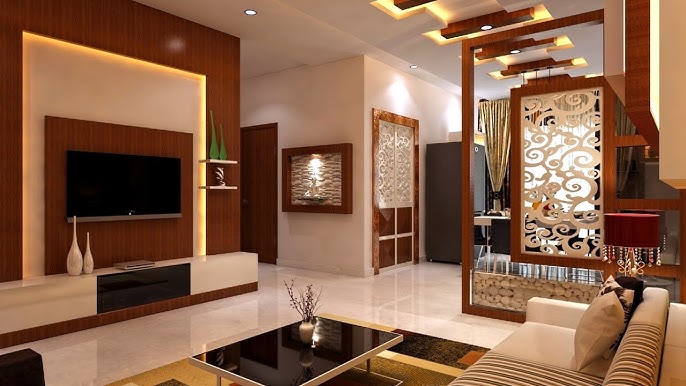Renowned Architecture Firm delivering world-class design solutions.
Renowned Architecture Firm delivering world-class design solutions.
Blog Article
Change Your Home With Vital Concepts of Interior Decoration and Aesthetic Appeals
By understanding the effect of color concept and the significance of texture and patterns, one can develop areas that are not only visually appealing but also deeply individual. Achieving this stability entails more than plain decoration; it includes a calculated arrangement and a keen understanding of just how each aspect engages within a space.
Comprehending Color Concept
Color concept is a basic facet of indoor style that substantially affects state of mind, assumption, and total visual. Recognizing the principles of color concept allows developers to create spaces that resonate mentally with residents while satisfying practical needs (miami luxury interior design). Colors can be categorized right into 3 main types: main, additional, and tertiary. Each classification plays a vital function in establishing consistency within a space.
The psychological impact of shades is profound; cozy colors such as reds and oranges evoke power and warmth, while awesome tones like blues and environment-friendlies advertise peace and harmony. The use of complementary colors boosts visual interest, producing striking contrasts that can boost a space's charm.
Neutral shades, on the various other hand, function as a versatile backdrop, enabling other design elements to radiate. It is crucial to consider aspects such as lights and the area's purpose when choosing a shade palette, as these can alter the perception of colors throughout the day.
Inevitably, a well-considered shade scheme can change an area, promoting a feeling of convenience and style that lines up with the residents' choices. Proficiency of color theory is, as a result, a vital skill for any type of indoor designer aiming to produce harmonious and welcoming atmospheres.
Accomplishing Equilibrium in Layout
Exactly how can designers achieve a sense of equilibrium in their rooms? Achieving balance in design is basic to creating unified insides.
Asymmetrical equilibrium, on the various other hand, relies upon varying elements that still attain a natural appearance. This method enables more dynamic and informal arrangements, offering passion while keeping equilibrium. By meticulously picking varying sizes, shades, and structures, designers can develop an aesthetically engaging space that feels balanced yet energetic.
Radial equilibrium emphasizes a central focal point with elements radiating outward. This design is commonly seen in circular layouts, where furnishings and style produce a natural border that attracts the eye inward.
Eventually, achieving equilibrium calls for thoughtful factor to consider of scale, percentage, and the relationships between components. Architecture Firm. By masterfully using these equilibrium principles, designers can change areas into settings that really feel both aesthetically pleasing and functionally harmonious, enhancing the total experience for occupants
Relevance of Spatial Understanding

A keen sense of spatial awareness allows designers to recognize centerpieces within a space, assisting the visitor's interest to key functions while preserving a total feeling of unity. It also helps in the tactical placement of lights, which can considerably influence the perception of room and state of mind. Understanding spatial relationships enables the designer to provide to the certain demands of residents, making sure that each area serves its intended purpose without endangering appearances.
Ultimately, spatial recognition is vital for optimizing the possibility of any type of interior room. By very carefully thinking about the interplay in between measurements, design, and function, designers can create atmospheres that not only fulfill sensible demands however likewise evoke a sense of convenience and beauty, improving the general living experience.
Incorporating Appearance and Patterns
Accepting a diverse variety of appearances and patterns can significantly enhance the aesthetic and tactile allure of an indoor room. The calculated use different materials-- such as wood, steel, fabric, and rock-- produces deepness and rate of interest, making an area feel extra inviting and vibrant. For example, integrating smooth surfaces with harsh structures can develop an equilibrium that attracts the eye and involves the detects.
When integrating patterns, consider both scale and repeating. Big patterns can work as focal points, while smaller sized, refined layouts can complement various other aspects without frustrating the room. Layering patterns, such as pairing floral paddings with candy striped tosses, includes intricacy and a feeling of consistency if implemented thoughtfully.
It is additionally critical to maintain a cohesive shade scheme, making certain that structures and patterns collaborate instead of contend for focus. By selecting a couple of crucial he said textures and patterns, you can create a linked visual that reflects your individual design while enhancing the total setting of the area. Inevitably, the Read Full Report cautious unification of these elements can transform an ordinary space into a sophisticated atmosphere abundant with character and warmth.
Customizing Your Area
Developing an area that shows your individuality is essential to achieving a really inviting setting. Customization in interior design allows you to infuse your unique style and passions into your home, transforming it from a plain sanctuary into a shelter that speaks with who you are. Begin by choosing a shade palette that resonates with your emotions-- vibrant hues can energize, while soft tones offer peace.
Include art work and style that show your passions, whether it be travel, nature, or abstract principles. Displaying personal collections, such as books, photographs, or souvenirs, can evoke valued memories and create centerpieces within a space. Additionally, take into consideration tailoring practical items, like upholstered furniture, to line up with your visual choices.

Final Thought
In conclusion, the transformation of a home through the important concepts of interior decoration and looks demands a detailed understanding of shade concept, equilibrium, spatial understanding, texture, and personalization. Each aspect contributes significantly to developing an unified and useful living setting - interior design firms. By attentively integrating these concepts, people can boost the aesthetic allure and emotional resonance of their spaces, eventually fostering a home that reflects distinct identities while supplying comfort and practicality
Report this page